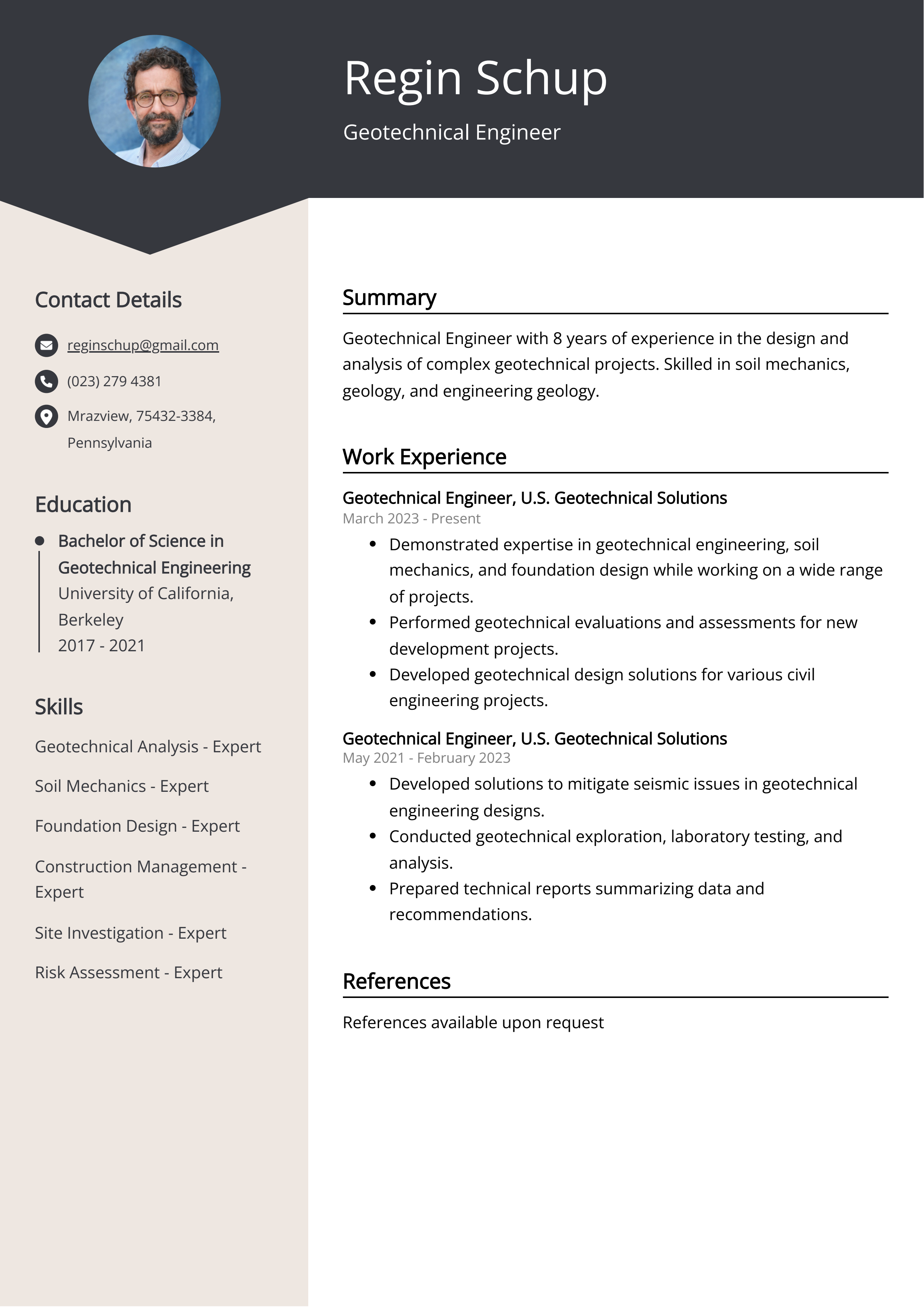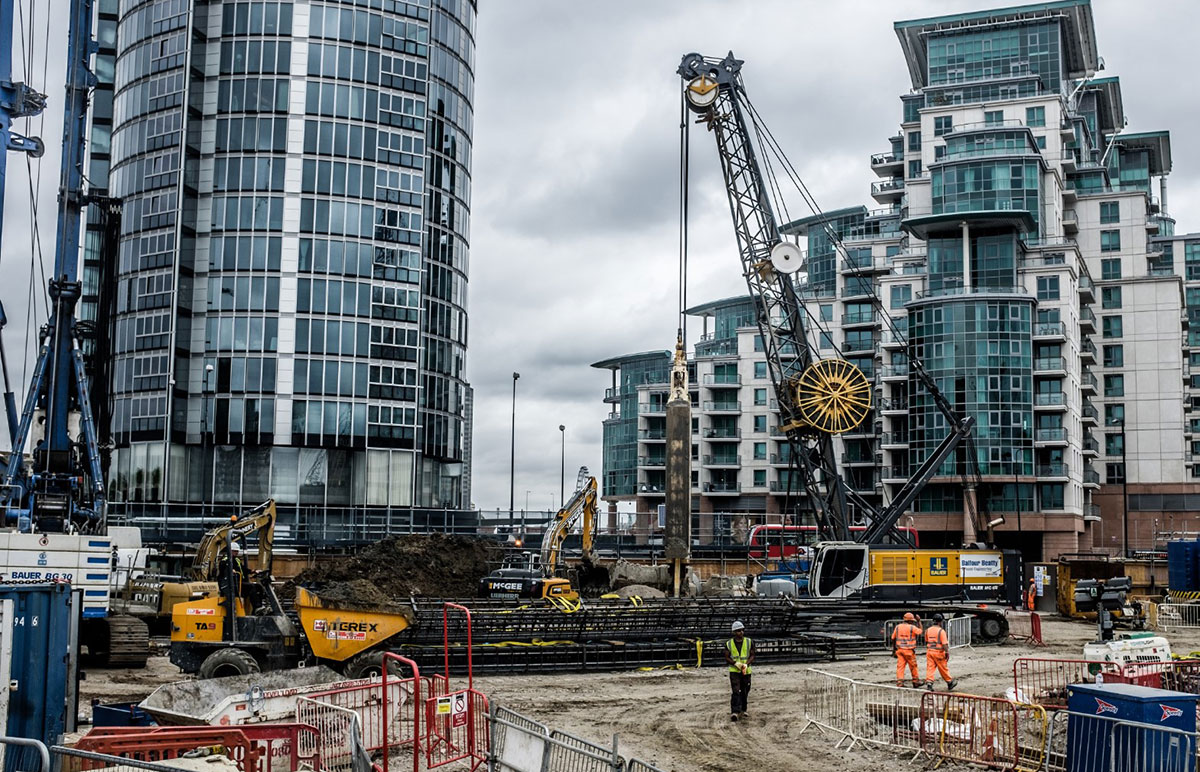A Biased View of Geotheta
Wiki Article
Indicators on Geotheta You Need To Know
Table of ContentsGeotheta Fundamentals ExplainedGeotheta for DummiesWhat Does Geotheta Do?More About GeothetaGeotheta - Questions

They perform site investigations, accumulate examples, carry out research laboratory examinations, and analyze data to examine the viability of the ground for construction projects - Engineer of Record. Based on their findings, geotechnical engineers offer suggestions for foundation design, incline security, retaining structures, and reduction of geotechnical hazards. They work together with other experts, such as architects, structural engineers, and building teams, to make certain that geotechnical factors to consider are incorporated right into the total task layout and execution
By assessing the actions and buildings of soil and rock, they can determine possible geotechnical threats such as landslides, dirt settlement, or slope instability. Their experience aids stop failures or mishaps that could endanger lives and property. Below are some in-depth duties and responsibilities of a geotechnical engineer: Site Investigation: Geotechnical designers conduct website investigations to gather data on subsurface conditions.
They analyze the information to understand the properties and behavior of the dirt and rock, including their strength, permeability, compaction qualities, and groundwater conditions. Geotechnical Analysis and Style: Geotechnical designers examine the information accumulated during site investigations to assess the stability and viability of the website for building and construction projects. They execute geotechnical estimations and modeling to review elements such as bearing ability, settlement, incline security, side planet pressures, and groundwater circulation.
The Best Strategy To Use For Geotheta
Foundation Layout: Geotechnical engineers play a vital role in making structures that can safely sustain the designated structure. They evaluate the dirt problems and load demands to identify the suitable structure type, such as shallow structures (e.g., footings), deep structures (e.g (https://www.tumblr.com/geotheta/757702666915840000/geotheta-has-grown-exponentially-since?source=share)., heaps), or specialized techniques like soil enhancement. They consider factors such as negotiation limitations, birthing capability, and soil-structure interaction to establish ideal structure stylesThey review building plans, monitor website tasks, and conduct field inspections to confirm that the design referrals are adhered to. If unpredicted geotechnical concerns emerge, they examine the circumstance and provide referrals for removal or modifications to the design. Danger Assessment and Reduction: Geotechnical engineers analyze geotechnical threats and threats connected with the task website, such as landslides, liquefaction, or soil erosion.

Collaboration and Interaction: Geotechnical engineers work very closely with other professionals entailed in a job, such as architects, structural designers, and building teams. Efficient communication and cooperation are necessary to integrate geotechnical considerations right into the general project layout and building procedure. Geotechnical designers provide technological know-how, answer inquiries, and make certain that geotechnical requirements are fulfilled.
Examine This Report on Geotheta
Here are some sorts of geotechnical designers: Structure Designer: Structure designers focus on making and analyzing structures for frameworks. They analyze the soil conditions, tons demands, and website qualities to identify one of the most appropriate structure type and layout, such as superficial structures, deep structures, or specialized techniques like pile foundations.They review the factors influencing slope stability, such as dirt residential properties, groundwater problems, and incline geometry, and create strategies to stop slope failures and alleviate dangers. Earthquake Engineer: Earthquake designers concentrate on evaluating and developing structures to hold up against seismic pressures. They examine the seismic hazard of a website, examine soil liquefaction capacity, and develop seismic layout criteria to make certain the safety and security and durability of structures throughout quakes.
They perform field testing, gather samples, and analyze the collected data to define the dirt homes, geologic formations, and groundwater problems at a site. Geotechnical Instrumentation Designer: Geotechnical instrumentation engineers concentrate on tracking and measuring the habits of soil, rock, and frameworks. They install and keep instrumentation systems that check factors such as index dirt negotiation, groundwater levels, incline activities, and architectural displacements to evaluate efficiency and provide very early warnings of potential problems.
The smart Trick of Geotheta That Nobody is Talking About
They carry out tests such as triaxial examinations, debt consolidation examinations, straight shear tests, and leaks in the structure tests to gather data for geotechnical evaluation and design. Geosynthetics Engineer: Geosynthetics engineers concentrate on the layout and application of geosynthetic products, such as geotextiles, geogrids, and geomembranes. They use these products to enhance dirt security, reinforce slopes, supply drain remedies, and control disintegration.They tend to be investigative people, which suggests they're intellectual, reflective, and analytical. They are interested, systematic, logical, analytical, and sensible. Some of them are additionally social, suggesting they're kind, generous, cooperative, patient, caring, useful, empathetic, tactful, and pleasant - Tailings Engineer.
In the workplace setting, geotechnical designers make use of specialized software program tools to perform computations, create layouts, and examine data. They prepare reports, evaluation job specs, communicate with customers and staff member, and coordinate task activities. The workplace setting gives a helpful environment for study, analysis, and collaboration with various other professionals associated with the project.
Little Known Facts About Geotheta.
They frequently check out task sites to conduct website investigations, examine geotechnical problems, and gather data for evaluation. These brows through involve taking a trip to different locations, sometimes in remote or difficult surfaces. Geotechnical engineers might execute soil tasting, conduct examinations, and screen building and construction activities to make certain that the geotechnical facets of the job are being implemented correctly.Geotechnical engineers likewise function in specialized geotechnical research laboratories. In these facilities, they carry out experiments, execute tests on soil and rock samples, and examine the design buildings of the products. Geotechnical laboratory engineers function thoroughly in these settings, taking care of screening equipment, running tools, and recording data. They collaborate with other laboratory personnel to make sure precise and reliable testing outcomes.
Report this wiki page